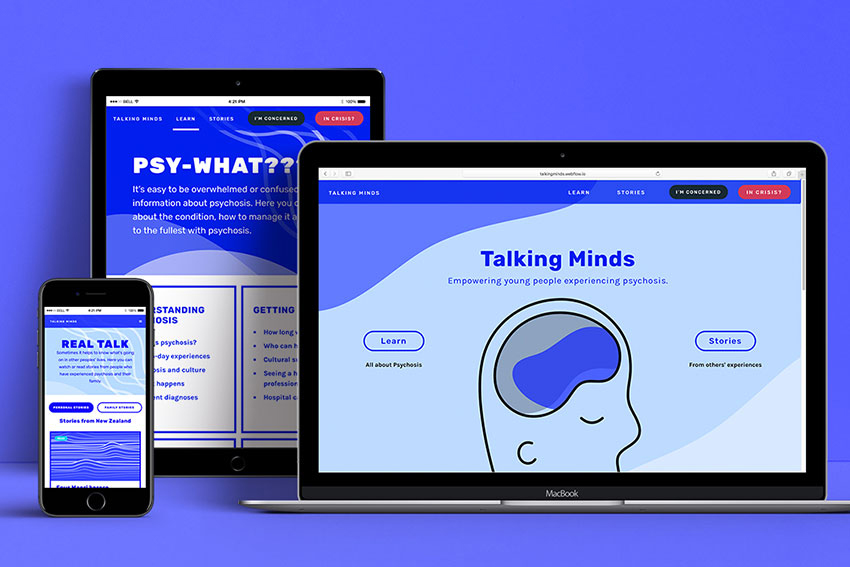New resource for youth with psychosis

AUT’s Design for Health and Wellbeing (DHW) Lab has teamed up with the Auckland District Health Board and the NZ Early Intervention in Psychosis Society to create Talking Minds, New Zealand’s first specific resource for youth with psychosis.
Talking Minds aims to help inform young people about psychosis so that they can recognise the signs early on, and empower them to live their lives to the fullest.
About three in 100 of the general population seek help from services when experiencing distress associated with a psychotic episode. Many people with psychosis first experience symptoms in their late teens or early twenties. Early intervention is key to supporting full recovery.
The website was also co-designed with young people with psychosis and their whānau. The DHW team decided that to create a truly useful and meaningful resource, they needed to talk to the users themselves.
The project brief was to initially create a medications app for mental health pharmacists. However, through co-design workshops, the team realised that youth with psychosis wanted something more.
AUT DHW Lab UX designer Nick Hayes says co-design was fundamental to the development of Talking Minds.
He says, “We found there was a lack of information and support resources for young New Zealanders experiencing psychosis, so we needed their voice, ideas and values to guide the creation of the resource.
“Most young people don’t know what psychosis is, or how it might affect them and their families, and what to do about it. Talking Minds provides comprehensive information about what psychosis is, and how it is perceived and treated in different cultural contexts.”
Working together with youth with psychosis also guided the look and feel of the website. In one activity, participants were asked to draw what a good day or bad day might look like. The team discovered that good days were associated with curves and circular wavy lines while bad days were characterised by sharp edges.
These shapes were used to create patterns that acted as inspiration for the look and feel of the website, and allowed information about psychosis to be presented in a much more positive and empowering way.
“Hearing what they had to say really challenged our assumptions about what young people need and look for when they’re experiencing mental health challenges,” says Nick Hayes.
Mental health pharmacists will also use Talking Minds as a tool to help guide conversations and to help tailor the right support for each individual.
Talking Minds is meant as a resource for both those seeking help from services and those who prefer to manage these experiences on their own.
Auckland DHB senior clinical psychologist Simon Judkins says, “Talking Minds will enable young people to have more agency, be more informed and participate more actively in decision making about their treatment.”
Talking Minds website
Design for Health and Wellbeing Lab website